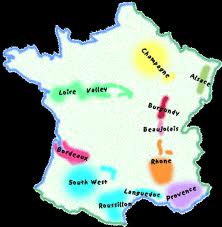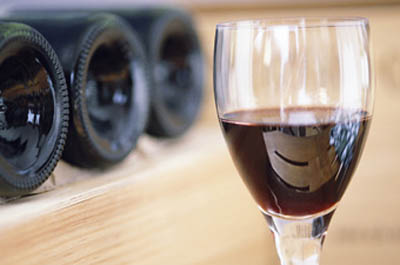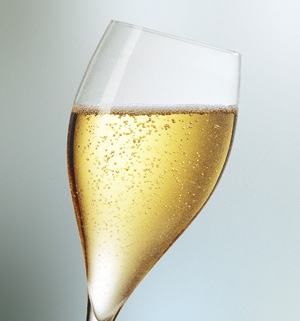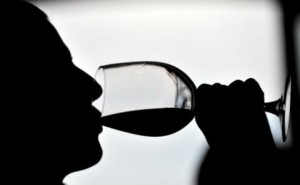
Do you know the difference between a wine from Bordeaux and a wine from Burgundy? Pinot grigio from pinot gris? Can you even say gewürztraminer? You may know what you like to drink, but do you actually know about wine?.
The French lawyer and politician Jean-Anthelme Brillat-Savarin once said "Burgundy makes you think of silly things, Bordeaux makes you talk of them and Champagne makes you do them." He might be right or not, but he sure was spot on in his description of the different wines in France and their quirky personalities.
French wine may have a bit of competition from Italy, the USA East Coast and South Africa these days but wine lovers still consider it the best in the world.
Each of the 10 major producing French wine regions makes wine that is different in taste or color in some way. This is partly because of the different types of grapes used (there are over 5000 varieties) but it is also down to the geography and history of the region.
Some regions have been making wine for thousands of years while some are more popular than others for various reasons.
Check out our list of the top 10 wine regions in France below so you can impress next time someone asks about the wine at dinner!
Top 10 Wine Regions in France
- Alsace: situated in the north-east of France. It is the smallest French wine region producing only 150 million bottles of wine a year. Known primarily for excellent dry and sweet white wines, Alsace produces some red and rosé wines too. Historically there has been a strong Germanic influence (the region has changed hands a few times) so the region produces quite notorious Rieslings and Gewürztraminer wines in the world.

- Bordeaux:
likely the most famed French wine region and in the world. It produces around 850 million bottles of wine a year and about a third of France's best quality wine. It is a large region in the south-west of France on the Atlantic coast which is home to about 8,500 producers or châteaux that make the delicious wine. 89% of the Bordeaux's wine production is red wine and the majority is made using merlot grape. Sauvignon Blanc is the most popular of the white grapes in Bordeaux.
- Bourgogne: this region, called Burgundy in English, is often considered the most land-oriented French wine region; huge importance is given to the area of origin. The region has 400 types of soils so it is considerable attention is paid to the soil in which the grape grows. "Burgundies" are red wines made from Pinot Noir grapes or white wines made from Chardonnay grapes.

- Champagne: This festive sparkling wine needs no introduction as it has been drunk by the world's elite for centuries. The name "Champagne" is protected by laws in the EU and only the sparkling wine produced in the area of Champagne, some 160 km east of Paris, can bear that appellation. It is true that Champagne's proximity to Paris has helped to ensured its historical prominence as it served as a "crossroads", basically it was an important military route and it was a trade route too.
- Loire Valley: is widely thought of as the most beautiful wine region in the world, the Loire Valley has a reputation for producing excellent white wine. This French wine region's winemaking history goes back to the 1st century. In the Middle Ages the wines from this region were highly esteemed in England as well and France and were even more priced Bordeaux wines. There are 30,000 hectares of vineyards that produce 400 million bottles of wine a year.
- Rhône: the Rhône Valley is a wine region in southeastern France along the Rhône River which mostly produces red wine. The northern part of the French wine region uses Syrah grapes to produce their wines and frequently blend them with Viognier grapes (white), while the southern half produces an assortment of red, white and rosé wines, frequently blending it with several types of grapes such as Châteauneuf-du-Pape. The 70,000 hectares of vineyards produce about 450 million bottles of wine a year.

- Languedoc-Roussillon: spreads over the area between the west of Rhone to the Spanish border and the Pyrénées. It is the largest wine producing region in the world - so much in fact that in 2001 it produced more wine than the whole of the United States. The bulk of France's cheap wines are produced here and over 2 billion bottles are made a year.
- Provence: is the warmest French wine region as it is in the south east and near the Mediterranean Sea. This French wine region has been busy making wine for over 2,600 years, back since the Greeks founded the city of Marseille in 600 BC. Provence most well known wines are rosé and the type of grape used in its production is is Mourvedre. It is frequently blended with, Grenache and Cinsault grapes which is generally an important element in the rosé wines.
- South-West: or Sud-Ouest covers several wine-producing areas to the south of Burgundy (Bordeaux). Sud-Ouest was prosperous in its wine trading a long time before Bordeaux was planted with vines. As this port city started to be more or less established, the "High Country" wines would descend through the Dordogne and Garonne estuaries and were then sent to be sold across the the Atlantic coast. Bordeaux wine merchants felt threatened by the competition so in the 14th century the police des vins (wine police) were bribed into restricting trading out of Bordeaux till the majority of Bordelais wine had been sold. This devastated the wine industry in the High Country and it has never really regained the upper hand on its competitor.
- Corsica: is an island in the Mediterranean. However its wines are not well known out of the island, as it is mainly consumed internally. There is an ancient wine-making tradition in Corsica, and as you would expect due to the proximity, many of the region's winemaking techniques and grape varieties used in the production are originally Italian. Corsica is known for its delicate rosés and dry white wines in its 7,200 hectares of vineyards.



